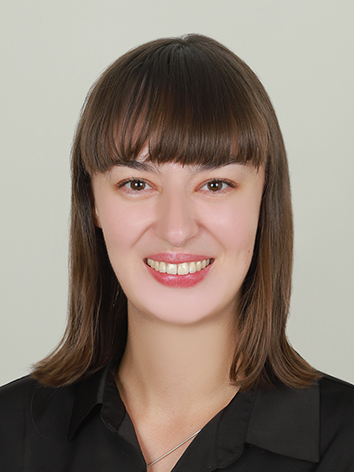Session 3 Climate Crisis
Biography
Lara Dommitzsch holds a Master of Science in Marine and Lacustrine Science and Management from the Vrije Universiteit Brussel, the University of Antwerp, and Ghent University, with a major in Environmental Impact and Remediation. She earned her Bachelor’s degree in Environmental Management from Justus-Liebig-University Giessen, Germany, focusing on hydrology. Her academic path reflects a strong commitment to understanding and addressing the impacts of human activity on aquatic environments.
Lara Dommitzsch has gained international experience through research and internships across Europe, Asia, and Australia. In Vietnam, she conducted a project on seafood wastewater treatment technologies, while in Australia she contributed to studies on the embryonic development of epaulette sharks. Currently interning with the Hanns Seidel Foundation in Seoul, she supports environmental cooperation between South Korea and Germany and conducts research on the conservation of spotted seals in the DPRK. Beyond her research, Lara Dommitzsch is a certified rescue diver, lifeguard, and swimming instructor who is passionate about connecting environmental science with practical conservation and community engagement.
Abstract
The island Laesoe in Denmark, between the Kattegat and Skagerrak, is an example for the rehabilitation of declining fish villages in Denmark. The two small West and East harbors (Vesteroe havn and Osterby havn) gradually changed from mainly fishing harbours to mainly sports harbours, including a supporting infrastructure, wellness offers, sports facilities, sports fishing and seal watching offers etc. Funding came partly from the European Union, which also supported large LIFE projects on the island, allowing for more eco-tourism. Nevertheless, declining island population remains a challenge.
On the Belgian coast, in the city of Oostduinkerke near the French border, a unique century-old tradition remains alive today: horseback shrimp fishing. Practiced today by only twelve families and recognized by UNESCO as Intangible Cultural Heritage, this sustainable practice demonstrated resilience for more than 500 years. However, this tradition faces increasing challenges from climate change, plastic pollution, intensified commercial fishing and ethical concerns.
Both are compelling examples how cultural heritage and local fishing communities adapt in the face of environmental and societal change.
Presentation Title Download
Fishing Communities Denmark and Belgium as Example for Adaptation to Changing Environments


